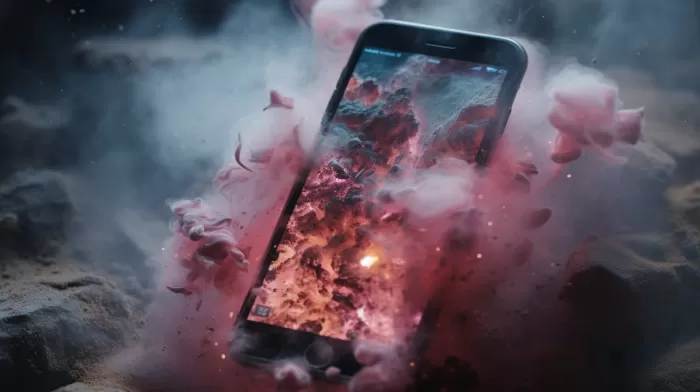Technology is deeply ingrained in our daily lives, bringing numerous benefits along with it. Smartphones, tablets, laptops, desktops and video game consoles all make our lives easier and more entertaining, but they also have hidden health dangers. Aside from the obvious issues, such as neck problems, eye strain, and a sedentary lifestyle, there is another disturbing health risk: toxic gases emitted by your electronic devices.
Your cell phone, tablet and perhaps other electronic devices emit toxic fumes. In fact, your favorite device might be releasing lethal gases like carbon monoxide. This means that the gadget you use all day could be poisoning you slowly. But where do these toxic gases come from? They originate from a vital component of most electronic devices – the battery.
The dangers of lithium-ion batteries
Lithium-ion batteries are found in cell phones and numerous other electronic devices. These batteries are used in two billion consumer devices each year. The only issue with them is that they might be discharging as many as 100 toxic gases at any given moment.
Chinese researchers from the Institute of NBC Defence and Tsinghua University examined 20,000 lithium-ion batteries, heating them to the point of explosion. They discovered that as these devices heated up, they began emitting gases like butane, ethyl cyanide, sulfur dioxide, and carbon monoxide. At best, these fumes can severely irritate your eyes, skin, and nasal passages. At worst, some of these gases can be lethal.
According to Dr. Jie Sun, lead author of the study and a professor at the Institute of NBC Defence, “such dangerous substances, in particular carbon monoxide, have the potential to cause serious harm within a short period of time if they leak inside a small, sealed environment, such as the interior of a car or an airplane compartment.”
Overheating is one way that fumes are released from lithium-ion batteries, but there are others. The researchers explained that it can also happen if the battery is damaged or if you use a disreputable charger. And those are just currently known methods. There is still much that is unknown about when, why, and how these gases are released.
Additionally, there is a risk of these batteries exploding. You may have heard about this happening with the Samsung Galaxy Note 7. This happens when lithium-ion batteries overheat. In the case of the Galaxy Note 7, the overheating was caused by a malfunction within the battery itself. However, even if your phone has a perfectly working lithium-ion battery, overheating can occur more easily than you might think. It can even overheat from being in a hot car, sitting out under the sun, being covered in a case that doesn’t allow enough ventilation, or just from using it too much.
Safety tips for cell phones and other devices
It’s unlikely that you’ll want to give up your cell phone or any other devices soon. So what can you do to make these electronic devices somewhat safer? Researchers suggest you can reduce the risk of toxic fume exposure and explosion by following these tips:
- Don’t fully charge your battery. A fully charged battery emits more toxic gases than a battery charged at 50 percent.
- Prevent your cell phone (or other devices powered by lithium-ion batteries) from being exposed to extreme temperatures. This means not leaving your phone in the car, especially during the summer.
- Only using the charger that came with your device when charging your phone, tablet, laptop, etc. If you need a replacement charger, make sure it comes from a reputable company.
- Replace your device if the battery gets damaged in any way. This includes water damage.
- Replace the battery or purchase a new phone if you notice that your device gets hot to the touch too quickly. This is a sign that your battery is on the verge of overheating.
Although it might be challenging to part ways with your electronic devices, taking these small precautions can go a long way in ensuring you stay safe while using them. By following these tips, you’ll be able to minimize the risk of exposure to toxic fumes and potential dangers associated with the lithium-ion batteries used in these devices every day.



